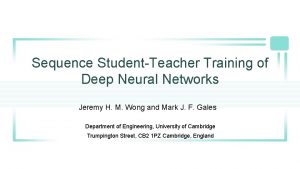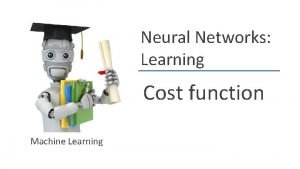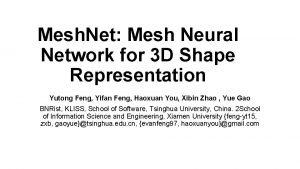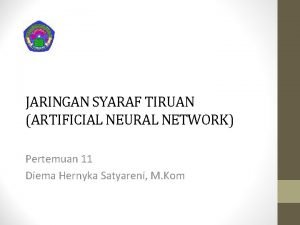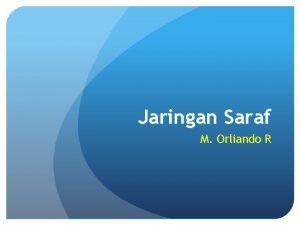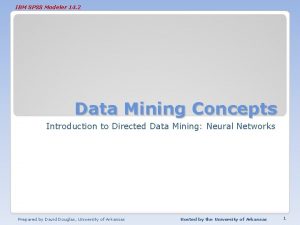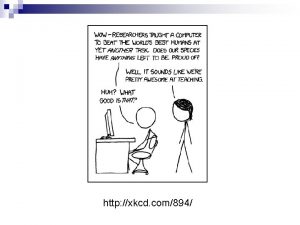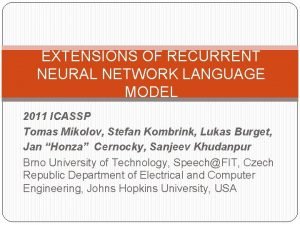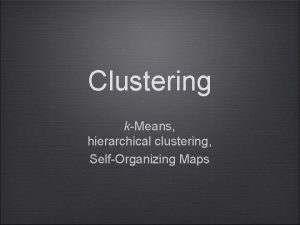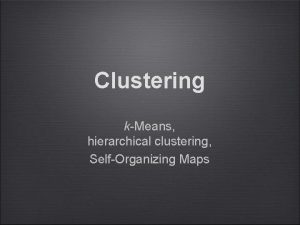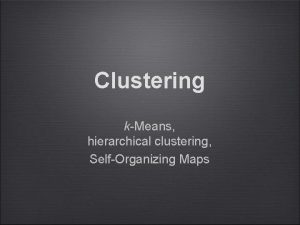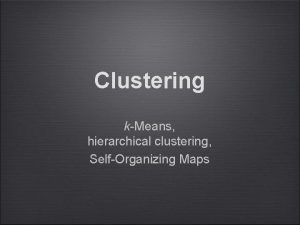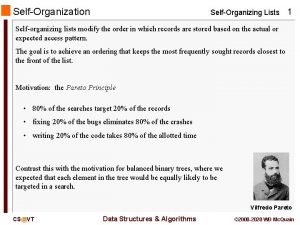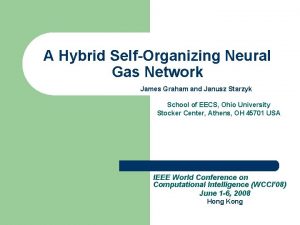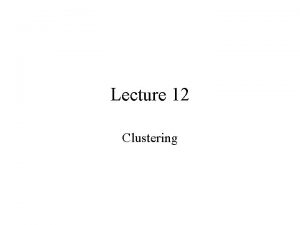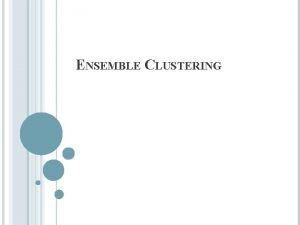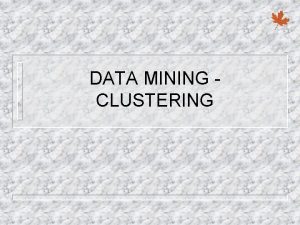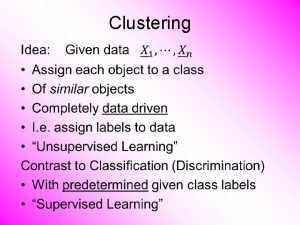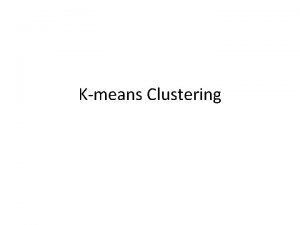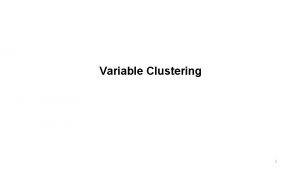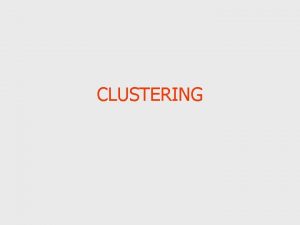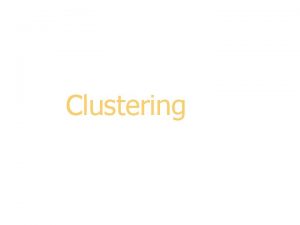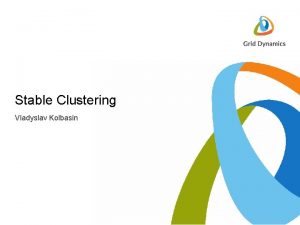Neural Network Homework Report Clustering of the SelfOrganizing




















- Slides: 20

Neural Network Homework Report: Clustering of the Self-Organizing Map IEEE TRANSACTIONS ON NEURAL NETWORKS, VOL. 11, NO. 3, MAY 2000 Professor:Hahn-Ming Lee Student : Hsin-Chung Chen M 9315928

OUTLINE o o o INTRODUCTION CLUSTERING SOM CLUSTERING EXPERIMENTS CONCLUSION

INTRODUCTION o DATA mining processes n n n o problem definition data acquisition. data preprocessing and survey data modeling evaluation. knowledge deployment. Self-organization map feature: n n Dimensionality reduction of unsupervised learning Can applied in deal huge amounts of sample The original data set is represented using a smaller set of prototype vectors not to find an optimal clustering but to get good

CLUSTERING o two main ways approaches n hierarchical approaches o agglomerative algorithm: n o divisive algorithm: n n top-down strategies to build a hierarchical clustering tree partitive approaches o o bottom-up strategies to build a hierarchical clustering tree k-means optimal clustering is a partitioning n n minimizes distances within maximizes distances between clusters

CLUSTERING(cont. )

SOM CLUSTERING o SOM training n first to find the best matching unit (BMU) n the prototype vectors are updated.

o The SOM algorithm characteristic: n n n applicable to large data sets. The computational complexity scales linearly with the number of data samples it does not require huge amounts of memory that basically just the prototype vectors and the current training vector.

EXPERIMENTS o o Tools: SOM_Tool. Box 2. 0 : Data set: clown. dat n Data set (“clown. data”) consisted of 2220 2 -D samples. o o o cluster with three subclusters (right eye) spherical cluster (left eye) elliptical cluster (nose) nonspherical cluster (U-shaped: mouth) large and sparse cluster (body) noise. (such as black x)

o Methods and Parameters: n Cluster step 1: o o n Training Parameters of the SOM's Map size: 19 x 17 Initial Neighborhood Widths: Rough Phases σ1(0): 10 Fine-Tuning Phases σ2(0): 2 learning rates: (The learning rate decreased linearly to zero during the training) Rough Phases : 0. 5 Fine-Tuning Phases 0. 05 Cluster step 2: o Method: K-Means Using 100 Runs


Experimental Results



single linkage dendrogram of 323 SOM Map unit

SOM Map average linkage dendrogram of 323 SOM Map unit

complete linkage dendrogram of 323 SOM Map unit




Conclusion
 Flat clustering vs hierarchical clustering
Flat clustering vs hierarchical clustering Divisive hierarchical clustering example
Divisive hierarchical clustering example Rumus distance
Rumus distance Homework oh homework i hate you you stink
Homework oh homework i hate you you stink Homework oh homework i hate you you stink
Homework oh homework i hate you you stink Jack prelutsky homework oh homework
Jack prelutsky homework oh homework Homework oh homework jack prelutsky
Homework oh homework jack prelutsky Homework oh homework i hate you you stink
Homework oh homework i hate you you stink The zebras cried when the wise old elephant died
The zebras cried when the wise old elephant died Freed et al (2001 ib psychology)
Freed et al (2001 ib psychology) Neural networks and learning machines 3rd edition
Neural networks and learning machines 3rd edition Student teacher deep learning
Student teacher deep learning Cost function in neural network
Cost function in neural network Input layer
Input layer Meshnet: mesh neural network for 3d shape representation
Meshnet: mesh neural network for 3d shape representation Pengertian artificial neural network
Pengertian artificial neural network Neural network in r
Neural network in r Toolbox neural network matlab
Toolbox neural network matlab Spss neural network
Spss neural network Xkcd neural network
Xkcd neural network Extensions of recurrent neural network language model
Extensions of recurrent neural network language model











